13+ Sample Preliminary Investigation Report
-
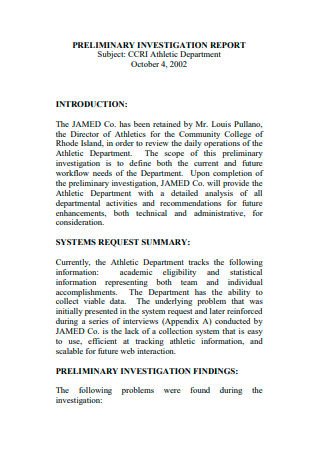
Preliminary Investigation Report Template
download now -

Basic Preliminary Investigation Report
download now -
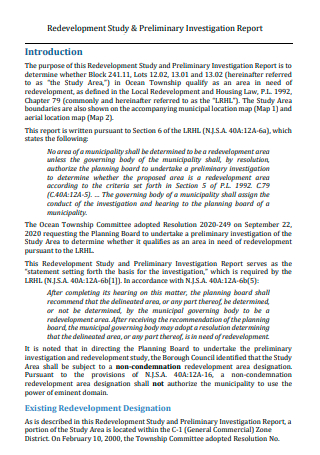
Redevelopment Study and Preliminary Investigation Report
download now -
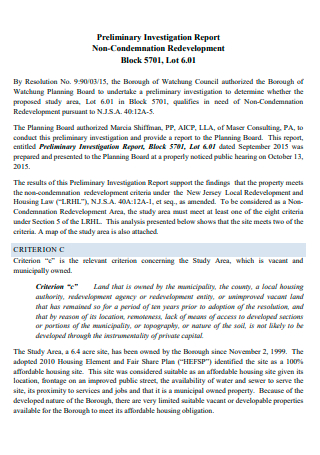
Preliminary Investigation Report Example
download now -
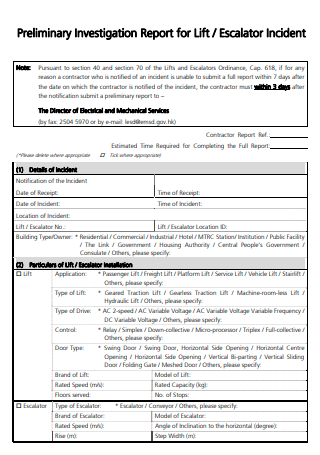
Lift Preliminary Investigation Report
download now -
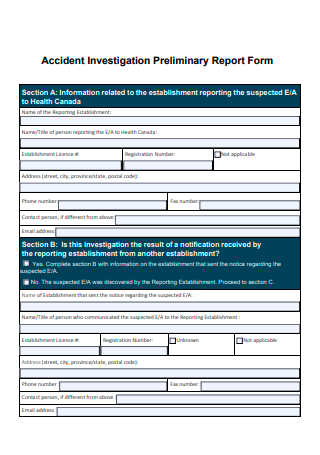
Preliminary Accident Investigation Report Form
download now -

Formal Preliminary Investigation Report
download now -
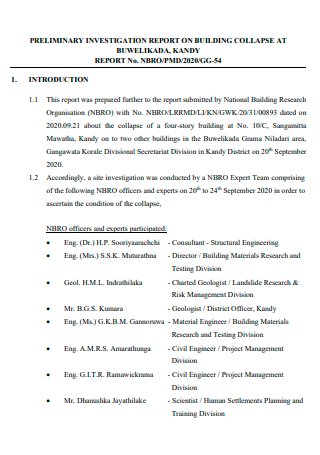
Building Collapse Preliminary Investigation Report
download now -
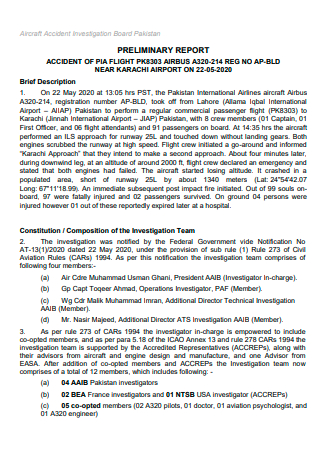
Aircraft Preliminary Accident Investigation Report
download now -

Draft Preliminary Investigation Report
download now -
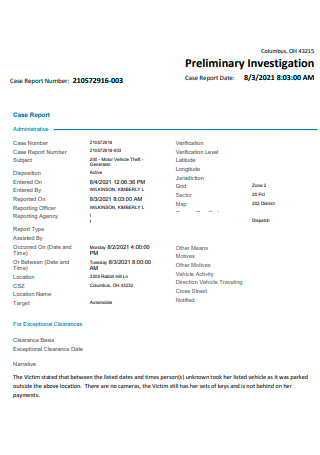
Preliminary Investigation Case Report
download now -
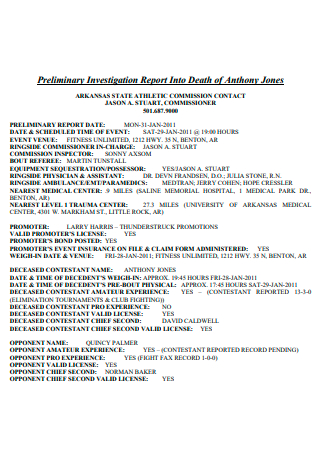
Preliminary Investigation Report in PDF
download now -
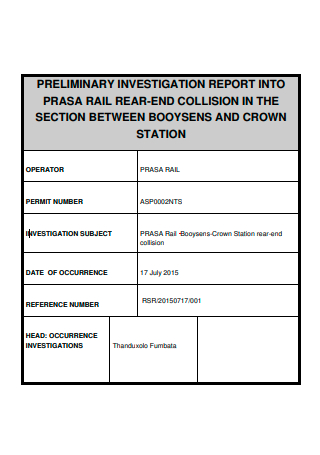
Simple Preliminary Investigation Report
download now -
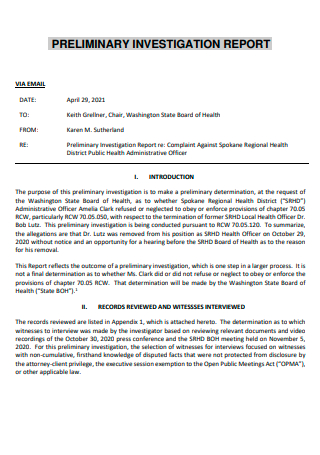
Printable Preliminary Investigation Report
download now
FREE Preliminary Investigation Report s to Download
13+ Sample Preliminary Investigation Report
What IS a Preliminary Investigation Report?
How is a Preliminary Investigation Conducted?
How To Make a Preliminary Investigation Report
FAQs
What is the meaning of a preliminary inquiry?
What are some of the different types of evidence?
What are the two major types of crimes?
What IS a Preliminary Investigation Report?
A Preliminary investigation report is defined as the initial response of a police agency to a crime that has been reported. The main purpose of the report is to find out who committed the crime, how the crime was committed, and eventually apprehend the criminal offender. Alternatively speaking, the preliminary investigation report eventually aids the court as well in determining the appropriate and necessary sentences to be carried out because the report document served as a legal and factual basis for sentencing. You’ve seen shows like Law & Order, CSI, All Rise, and the likes. The stories were built up from crimes, investigation, and then eventually leading to court proceedings, but it all revolves around how the investigation was made and what was the result of the investigation that influences later on a court’s decision.
How is a Preliminary Investigation Conducted?
It all starts with that fateful call to the police to report a crime. You have the police siren sound blasting through the air, as the police rush to where the crime was reported to have taken place. Then, what comes next? There are a lot of circumstances involving a crime, and doing a preliminary investigation is not just a per-seen basis. The police officer responding to a crime scene has to be careful and thorough enough to check all sides while making his report. There may be extenuating circumstances, exempting circumstances, and even aggressive circumstances that led to the crime being committed. The police work when investigating a crime is a painstaking and tedious kind of work. But how exactly is a preliminary investigation being done?
How To Make a Preliminary Investigation Report
After knowing much about what a police officer does at the scene of the crime, what is the next thing that the officer does? He goes on to file a report. More specifically, a preliminary investigation report. The preliminary investigation report is an essential piece of document that could move the case forward for a court hearing. It contains all the information on the evidence and interviews collected in the crime investigation. As it is, it is also a piece of document that protects the rights of both the victim and the suspect of the crime, protecting them from an unfair trial outcome, as well as protecting them from self-incrimination. The preliminary investigation report is the basis of a prosecutor in knowing how to proceed with proper charges and court hearings. Since this is a piece of legal document, a format should be followed when creating the report. Here are some of the essential elements that need to be included in a preliminary investigation report.
-
1. Description
This section includes the preliminary information about the case at hand. The description should include information such as the names of the parties involved, such as the suspect or the offender, the victim(s), and the witnesses. A case number should also be provided. Other details that should be stated are the date and time of the incident, the place, materials or evidence used for the offense or crime, and other pertinent information related to the perpetrating of the crime or offense, or supporting materials that a crime has occurred. Take note that everything should be written as factual and narrative, free of opinion, conclusion, or analysis. The description should be written on a per saw basis, exactly as how things are seen from the moment the police officer and the CSIs walk in the scene.
-
2. Documentation of Evidence
This section is where the police officer initiating the report collects and compiles together the result of the investigation coming from the technical team report, or the CSI team. It consists of all the evidence that has been collected, including body descriptions (if this is a death investigation), measurements, crime scene photograph products, plot diagrams, sketches, et cetera. Each piece of evidence is properly labeled or numbered.
-
3. Investigation Structure
This is where the police officer in charge of the case narrates how the investigation was conducted. Remember to keep the language of this section simple, concise, and straightforward. This is the section where the questions of what, who, when, where, and how are answered. Notice that we didn’t include the “why”. This meant that the investigation structure should be written in a way that’s free from personal opinion or analysis. This is a summary narration of facts gathered, and how the investigation proceeded. The structure is typically written in a chronological format. It starts from the date and time when the police officer arrives at the crime scene. The next narratives should be what did the officer do at the following time, whom the officer called for backup, if applicable, and all other contacts that were called to the scene. It also includes the next steps such as if there were interviews or interrogations conducted, what items were collected, if a hot pursuit happened, or a detainment along with probable cause, et cetera. The structure should also include details on how the crime or the incident took place based on the observation or witnesses’ reports which could be written in a step-by-step narration.
-
4. Recommendation
The rest of the preliminary investigation report should be written on a narrative and factual basis. When it comes to the recommendation, or conclusion, section, this is where the police officer presents his observation as to what type of crime was committed, what were the probable causes if there were, and the veracity of the facts that support that the suspect was the probable and assumed perpetrator or offender, and what are the appropriate charges that should be filed. The recommendations made are suggestions, subject to the prosecutor’s approval. The prosecutor will then proceed with the filing of court proceedings as necessary, taking over the preliminary investigation report from the police officer.
FAQs
What is the meaning of a preliminary inquiry?
A preliminary inquiry is different from a preliminary investigation report. Where a preliminary investigation report was written as part and fulfillment of a crime scene investigation, a preliminary inquiry takes place in the court itself. A preliminary inquiry is when the judge assigned to the case reviews all the material evidence presented and eventually decides if there is enough evidence to merit a court trial. A preliminary inquiry is also called a preliminary hearing. A preliminary inquiry can be held whether the defendant (the suspect) has pleaded guilty or not. The inquiries, or the preliminary hearing, are oftentimes not required, and the defendant has an opportunity to waive it or not. A bit like holding a mini-trial, the prosecutor will present the witnesses and evidence to the case. Based on the evidence and the witnesses’ statements, the judge decides if all the facts lead to a probable cause determination, and then proceeds with the scheduling of a court trial.
What are some of the different types of evidence?
Evidence is essential to any type of incident, be it an offense, damage, or criminal. Before any types of processes move forwards, evidence is significant to determine the type of case or proceedings to be held. Evidence supports the facts surrounding any case. The following different types of evidence used are demonstrative evidence, documentary evidence, real evidence, and testimonial evidence. Demonstrative evidence is an illustrative type of evidence. It usually consists of diagrams, charts, sketches, graphs, maps, or anything that portrays, illustrates, or demonstrates the testimonies taken from witnesses. This type of evidence is admissible, as long as it is presented in a way that is more narrative than prejudicial or concluding. If demonstrative evidence is more illustrative in terms of its presentation, documentary evidence is the write-ups or the documents that were gathered from the investigation. These are your personal letters, legal letters, contracts, news articles or newsletters, journals or diaries, and even online written contents such as blogs or social media posts, any document presented that leads to the build-up or probable cause of the crime or offense. Due diligence, however, should be practiced when using documentary evidence. Not all documentary evidence is approved for presentation at a court trial since these documents need to be checked for authenticity and trustworthiness. Real evidence is the physical and material type of evidence. These are materials and items that can be physically held and examined. Examples of real evidence are items used for the perpetuation of the crime such as a gun or a knife; blood samples; fingerprints, footprints; DNA samples, drugs, and so on. Real evidence is usually admissible in court since, by nature, it represents the factual nature of the crime committed. Testimonial evidence is the testimonies gathered from witnesses as part of the investigation. It can either be a recorded interrogation conducted by the police officer, or it could be at the instance where the witness is called to stand at a court trial, under oath, and to give their testimony on what they heard, saw, witnessed, or any information they are aware or knew about that is related to the crime or offense at hand.
What are the two major types of crimes?
Often intertwined and mixed up by the general public in the terms of use, but in reality, there is a difference between felonies and misdemeanors. Felonies and misdemeanors are the two major types of crimes. The difference between the two is the type of punishment afforded for each of these crimes, especially when it comes to the number of years to be served in imprisonment, as applicable, and the number of damages to be paid. Felonies are considered to be crimes of the most serious nature. The terms for sentencing for felonies are usually longer than a year. Examples of felonies are rape, murder, robbery, kidnapping, treason, homicide, manslaughter, fraud, burglary, cyber crimes, extortion, identity theft, and so on. Misdemeanors are crimes usually punishable by a year or less, or less serious crimes. Some examples of misdemeanors are petty theft, minor in possession of alcohol, DUI (driving under influence), shoplifting, disorderly conduct, simple assault, and so on.
It all begins with that police dispatch call that starts off the whole process of an investigation. From the interrogations, searches, gathering and collecting evidence, hot pursuits, arrests, detainment, all of that are recorded in a preliminary investigation report. The importance of this piece of the document could not be undermined. If written accurately and appropriately, the preliminary investigation report serves as the basis or the foundation for starting a legal court trial for a case to move forward. Hence, attention, care, and thoroughness should be given when creating the preliminary investigation report.
Need help in creating one? Download our available investigation report templates now, and see how convenient it is to create that effective preliminary investigation report that can help move your case forward!
